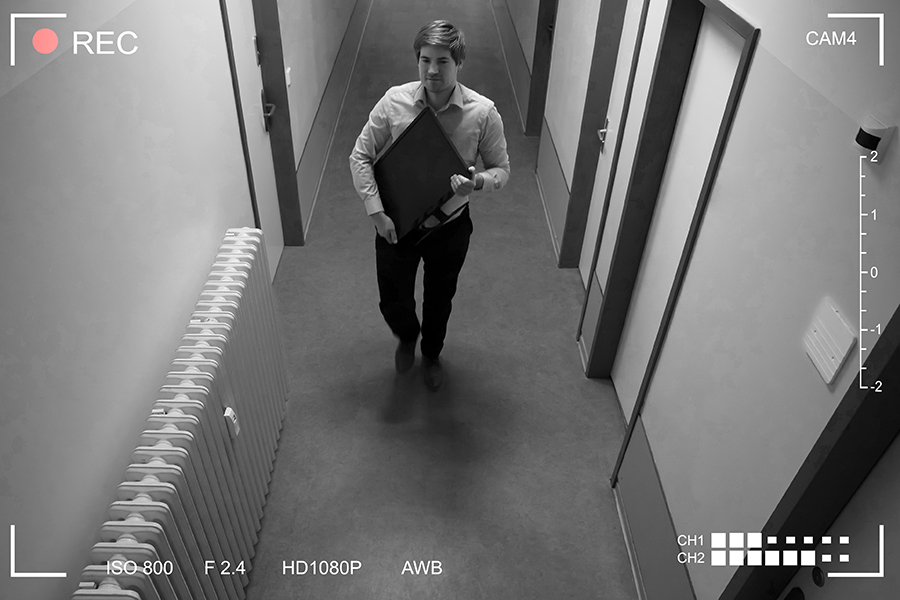How to Turn Security Footage into Powerful Video Surveillance Evidence

The Expanded Role of Video Surveillance Evidence
Today, video surveillance cameras are nearly everywhere—monitoring environments ranging from retail stores and hospitals to schools, corporate offices, and public transit stations. With the rise in public safety concerns and growing security needs, video surveillance evidence has become essential for both deterring crime and supporting incident response. It’s like extending human vision to cover more ground, offering the ability to “see” multiple locations at once.
But despite widespread use, the challenge of how to fully leverage such vast video data into relevant video surveillance evidence remains. Manual monitoring of thousands of video feeds is not only impractical; it’s impossible. For example, a large city’s transit authority may operate tens of thousands of surveillance cameras. Monitoring all of them around the clock would require immense manpower—and even then, critical details could easily be missed due to fatigue or human error.
Manual Video Review: Time-Consuming and Prone to Error
Because real-time monitoring is difficult to sustain, most surveillance footage is reviewed only after an incident has occurred. Even then, security teams must sift through massive amounts of footage in search of valuable evidence. This process is not only tedious—it’s also prone to oversight. Investigators face the challenge of locating the right footage, analyzing it quickly, and doing so without missing key details. All while time is ticking.
While video surveillance evidence can be incredibly powerful, the traditional manual review process limits its effectiveness. The truth is, much of the valuable information captured by cameras remains underutilized, simply because there’s no efficient way to analyze it quickly.
Video Analytics: Turning Footage into Actionable Evidence
That’s where video analytics comes in. More businesses, municipalities, and institutions are turning to analytics tools that use artificial intelligence (AI) to process footage, identify objects (like people, vehicles, or bags), and extract metadata. This metadata allows users to search video footage by specific criteria—such as a person’s appearance, color of clothing, direction of travel, or even time spent in a location.
Key Benefits of Video Analytics for Investigations:
-
- Accelerated Investigations: Reduce hours of video review to minutes.
- Precision Search Capabilities: Pinpoint people or objects of interest by filtering based on attributes like gender, clothing color, vehicle type, size, or dwell time.
- Enhanced Accuracy: Minimize human error by relying on AI to detect and categorize relevant data.
- Real-Time Decision Support: Respond faster during evolving incidents with live alerts and faster video retrieval.
- Maximized Security Investment: Leverage existing surveillance systems more effectively by layering on intelligence tools.
When every second counts—such as after a crime or during a live emergency—video analytics can make the difference between reactive reporting and proactive investigation. It allows law enforcement and security teams to gather insights faster and take decisive action, increasing the odds of successful outcomes.
Analytics in Action: Solving Crimes on Campus
A major U.S. university transformed into an intelligent campus by deploying BriefCam’s video analytics platform across hundreds of cameras. This implementation significantly enhanced the university’s ability to respond to incidents, ensure campus safety, and streamline investigations.
The university’s public safety team can now rapidly review video surveillance evidence using powerful filtering tools to identify people and vehicles based on attributes like clothing color, size, direction, speed, and more. These capabilities allow investigators to quickly narrow down footage and locate individuals or vehicles of interest in minutes rather than hours.
In one case, the university used BriefCam to investigate a reported burglary. Rather than manually scanning countless hours of footage, the security team applied attribute filters to isolate the suspect’s appearance and movement patterns, confirming the timeline of events and supporting the suspect’s arrest.
Beyond solving individual incidents, the video analytics system is also used to assess traffic flow and crowd behavior on campus—enhancing overall emergency preparedness and improving public safety operations.
From Surveillance to Intelligence
Traditional surveillance footage, while valuable, often fails to deliver its full potential due to manual processes. Video analytics bridges this gap—helping transform surveillance systems into intelligence-gathering tools that not only record what happened but help teams understand why and how it happened, and what to do next. This transition turns security teams from passive observers into proactive problem-solvers who can:
- Identify patterns and trends
- Respond to incidents in real-time
- Improve resource allocation
- Collaborate more efficiently with law enforcement
A Smarter Approach to Security
For any organization that has already invested in surveillance systems, video analytics is the next logical step. By turning video data into searchable, actionable, and quantifiable video surveillance evidence, these tools help law enforcement, campus security, and private companies work smarter—not harder. Instead of drowning in data, teams gain a clear view of what matters most, leading to faster decisions, better outcomes, and a stronger return on security investments.
Ready to learn more about how video data can be leveraged as video surveillance evidence? Watch our on-demand webinar that shows how law enforcement used video analytics to crack a high-profile disappearance case. Watch now
Editor’s note: This post was originally published in January 2020, and has been refreshed and updated for accuracy.
Signup to receive a monthly blog digest.